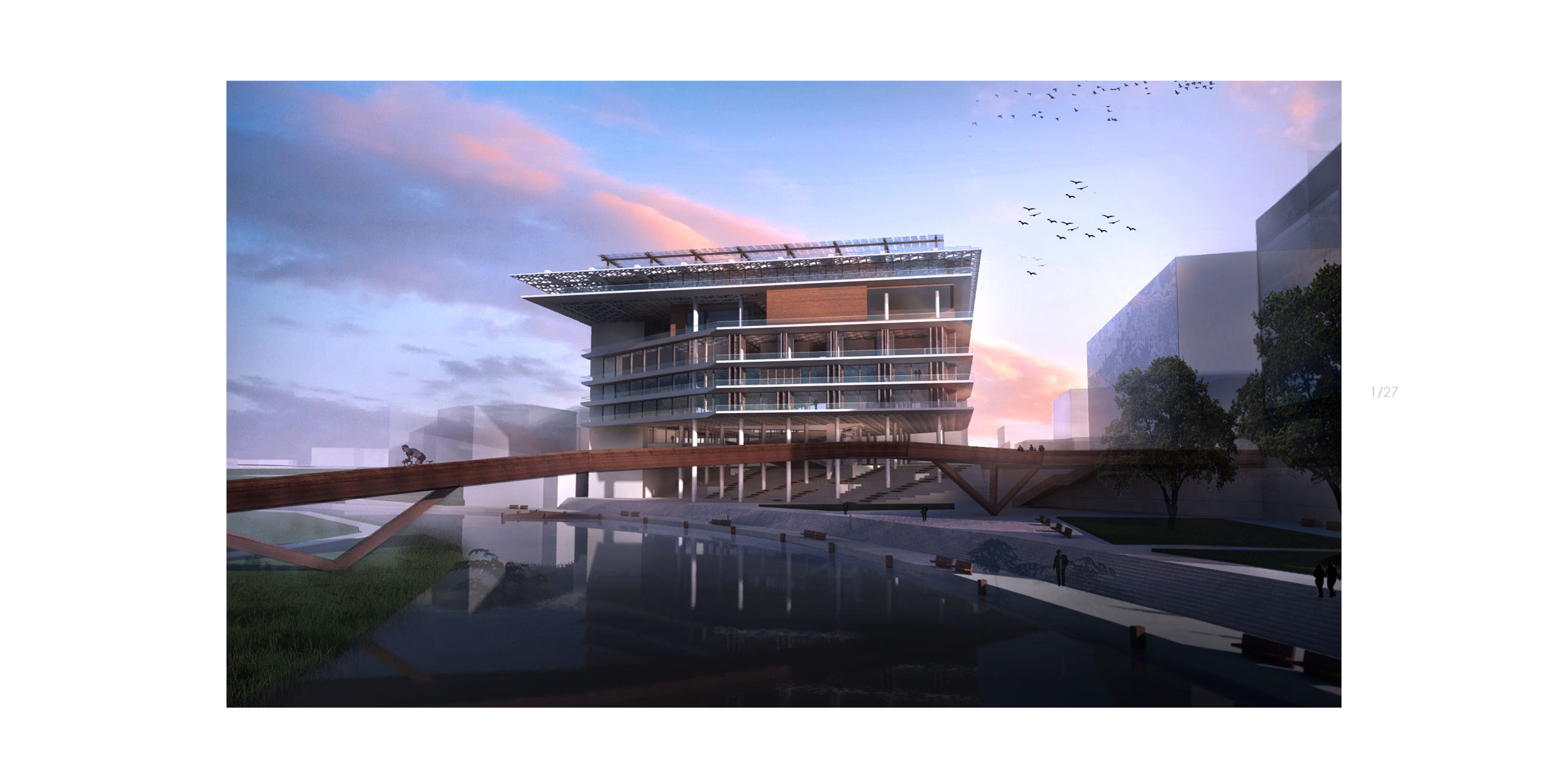
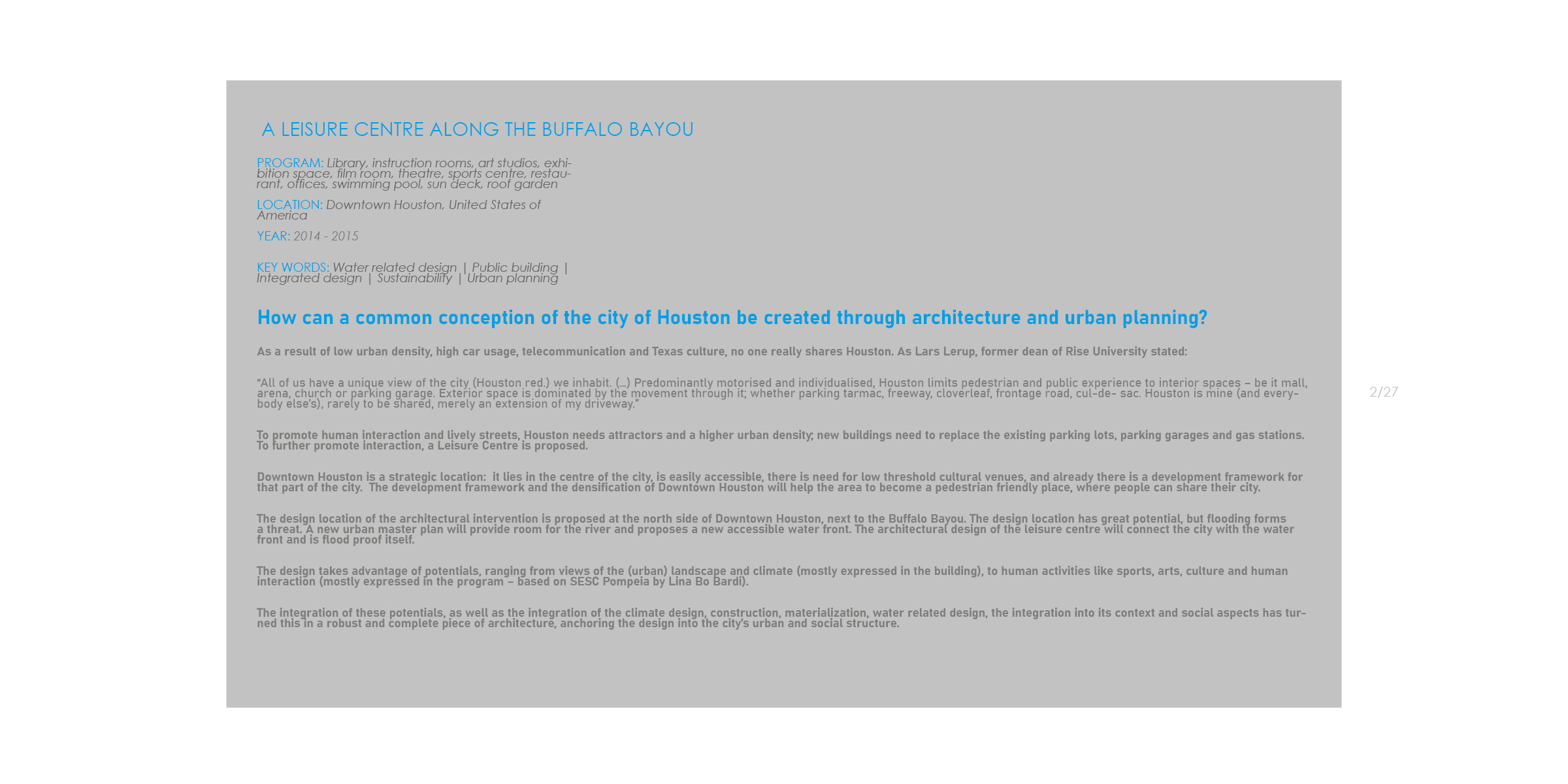

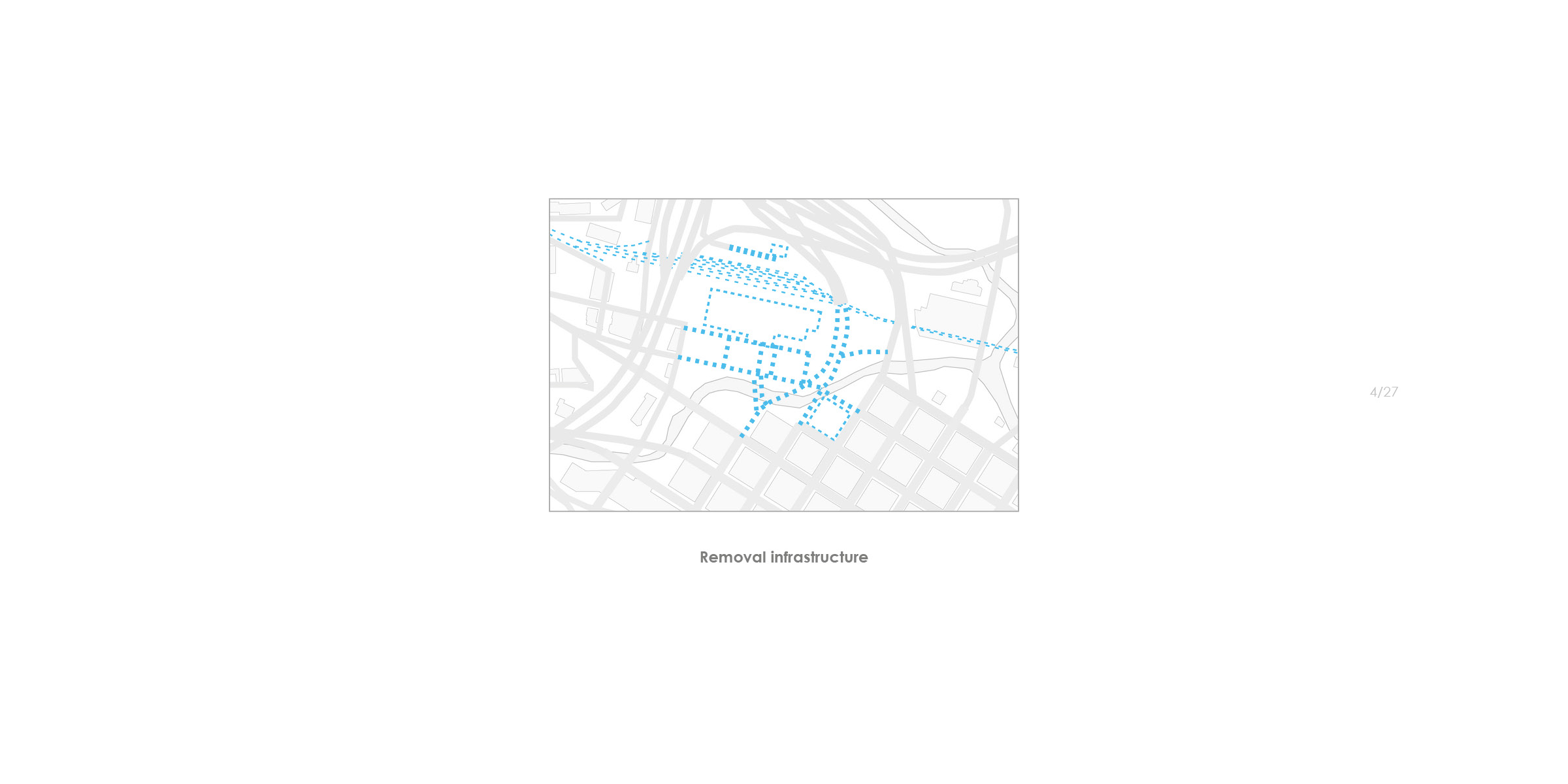
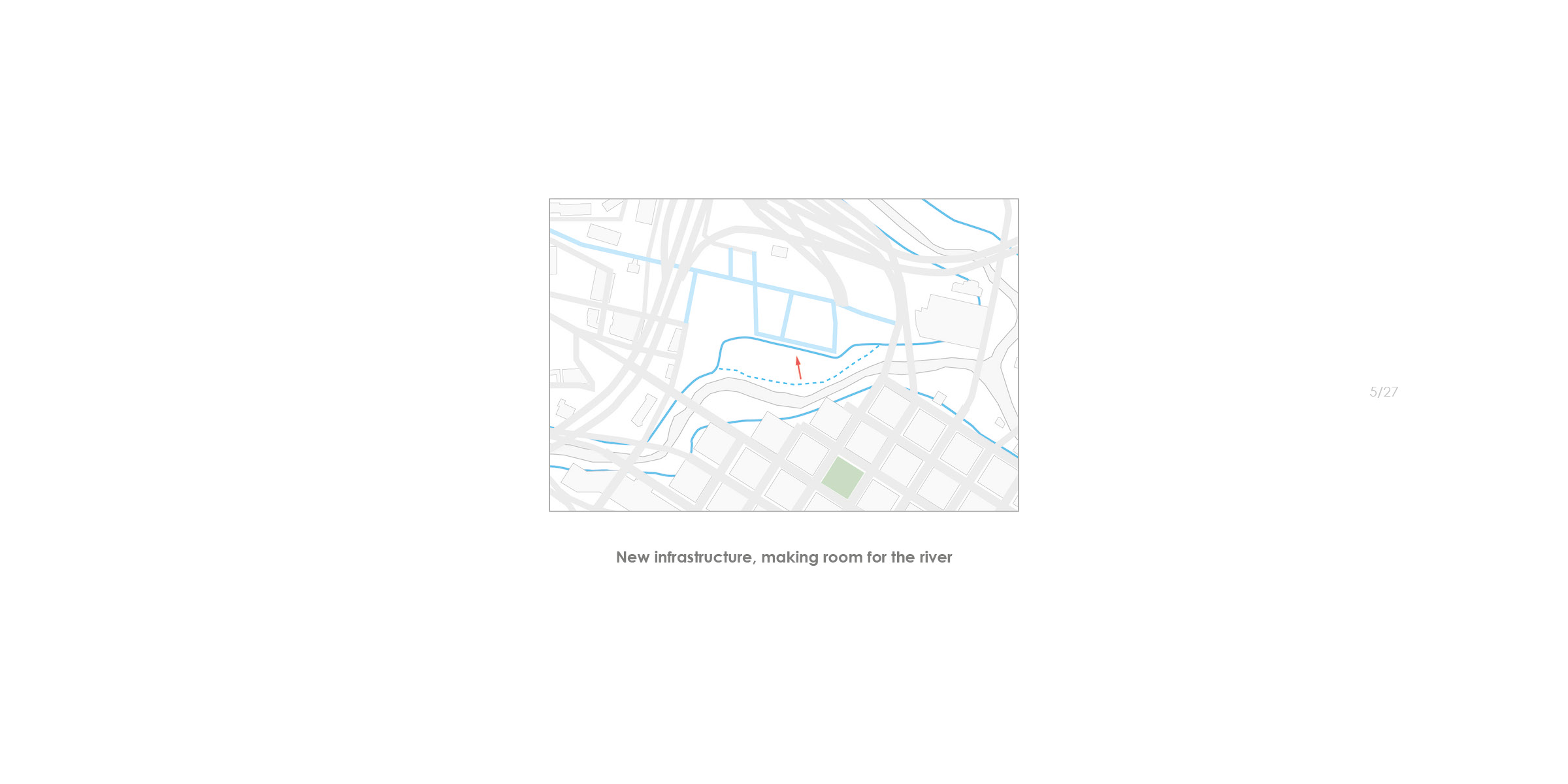
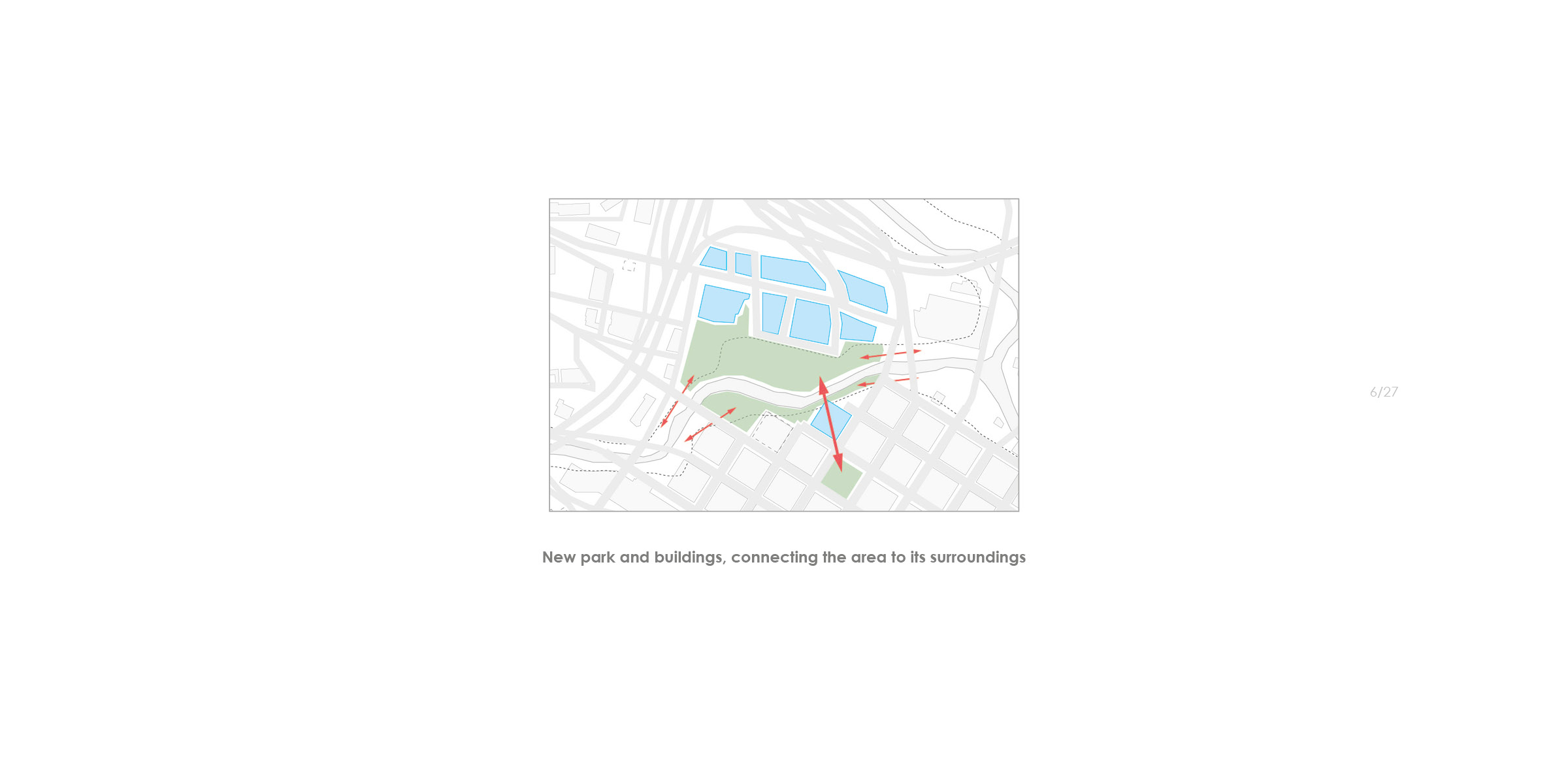
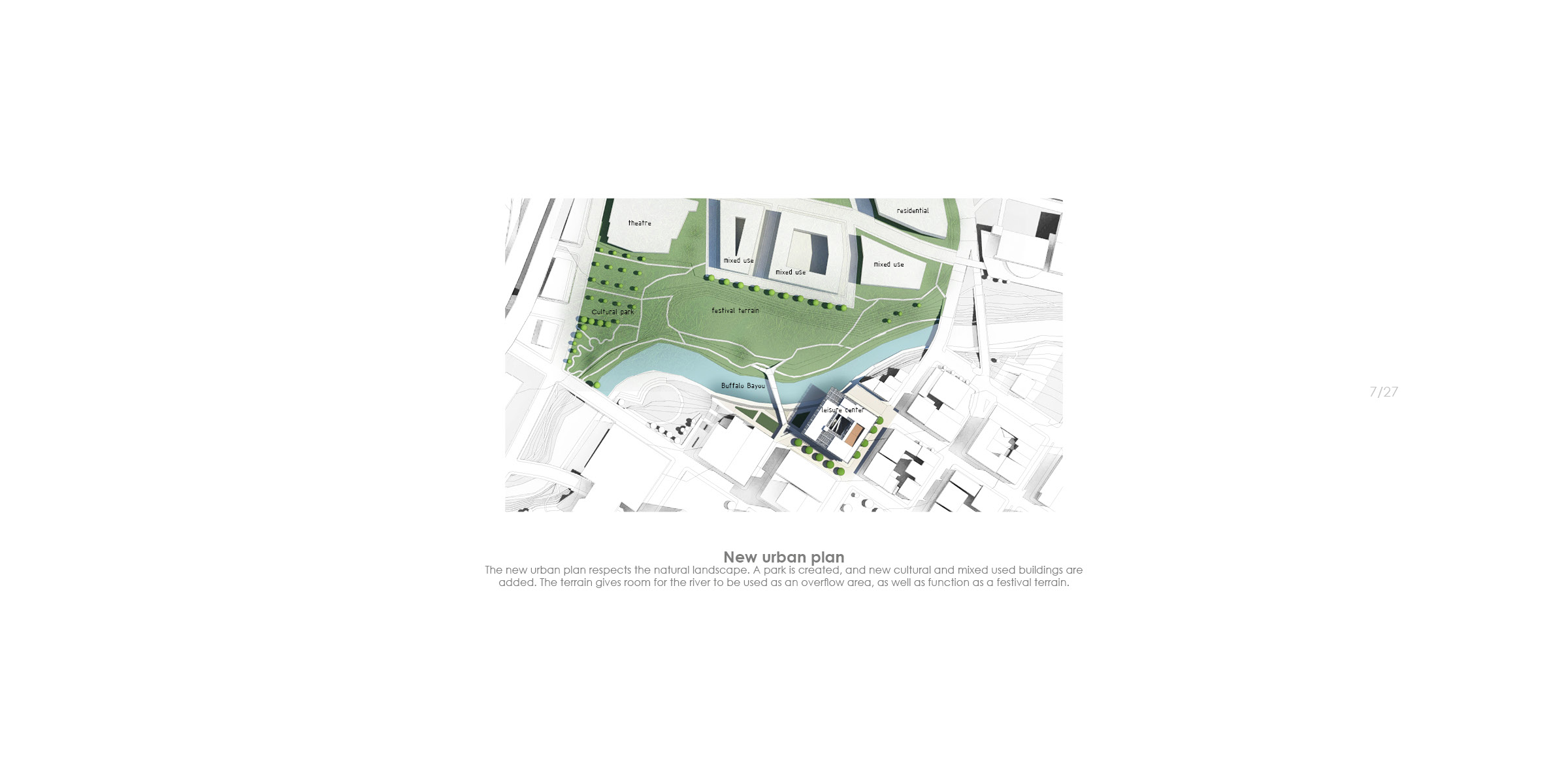
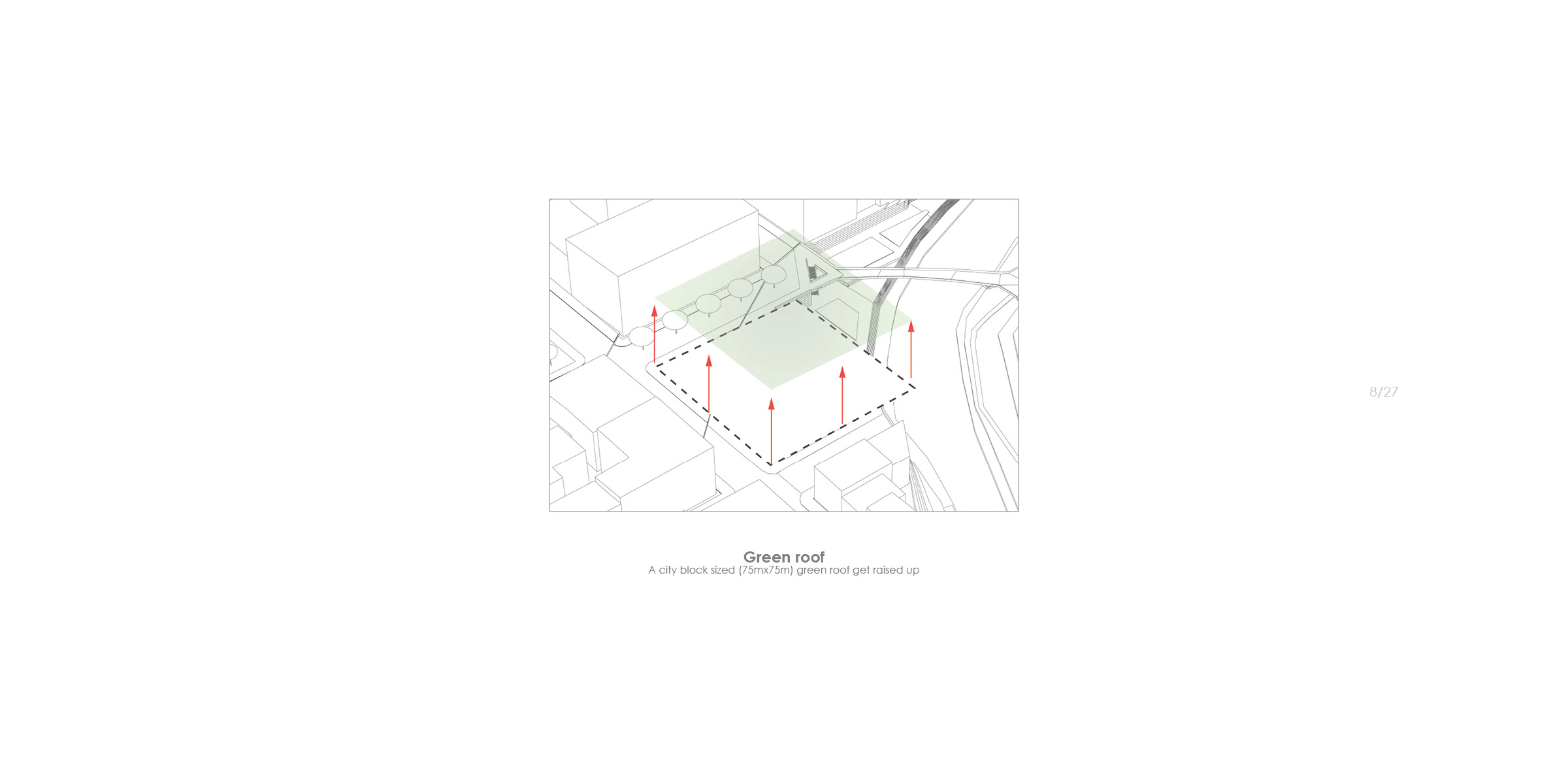
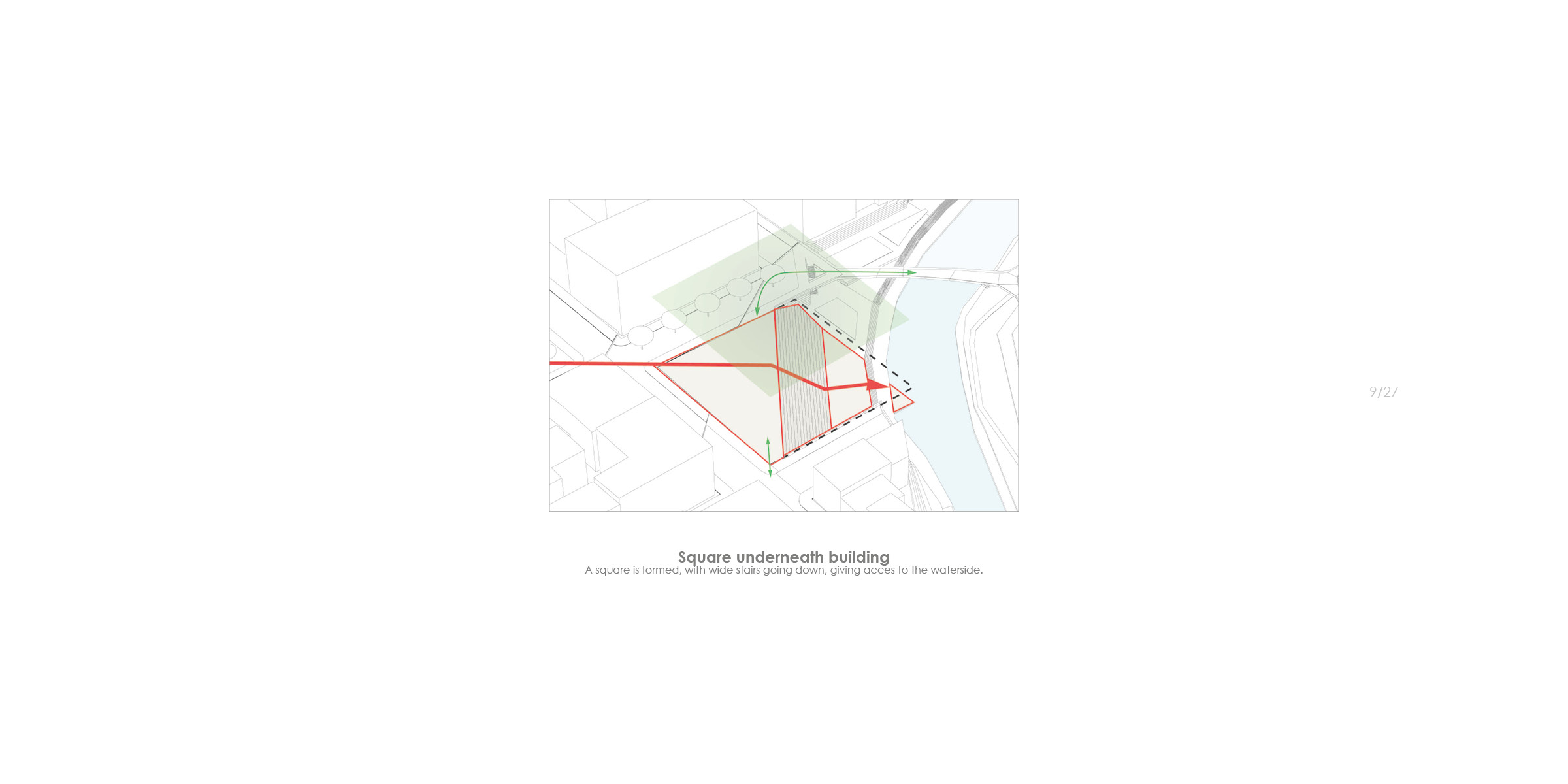
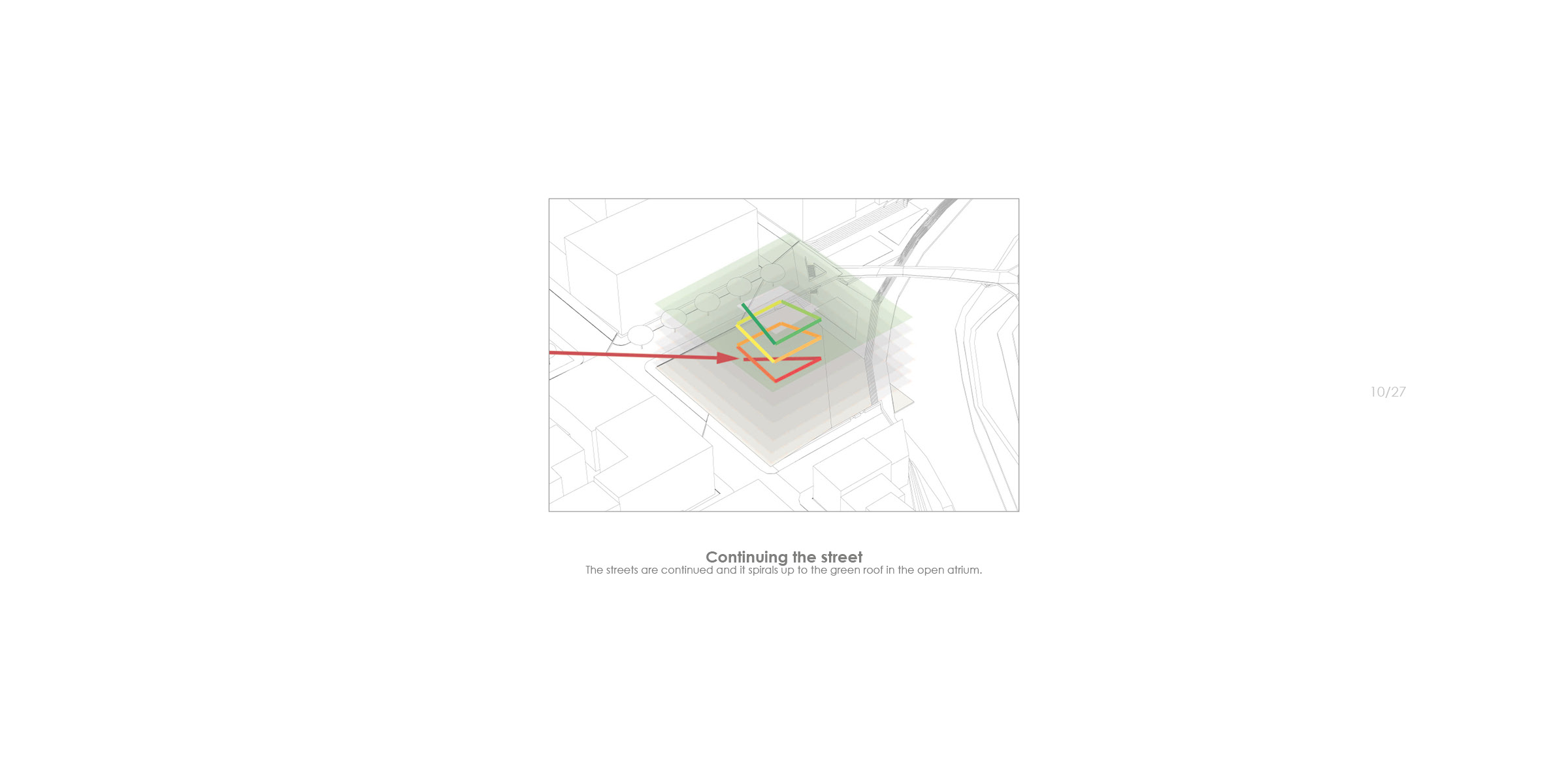
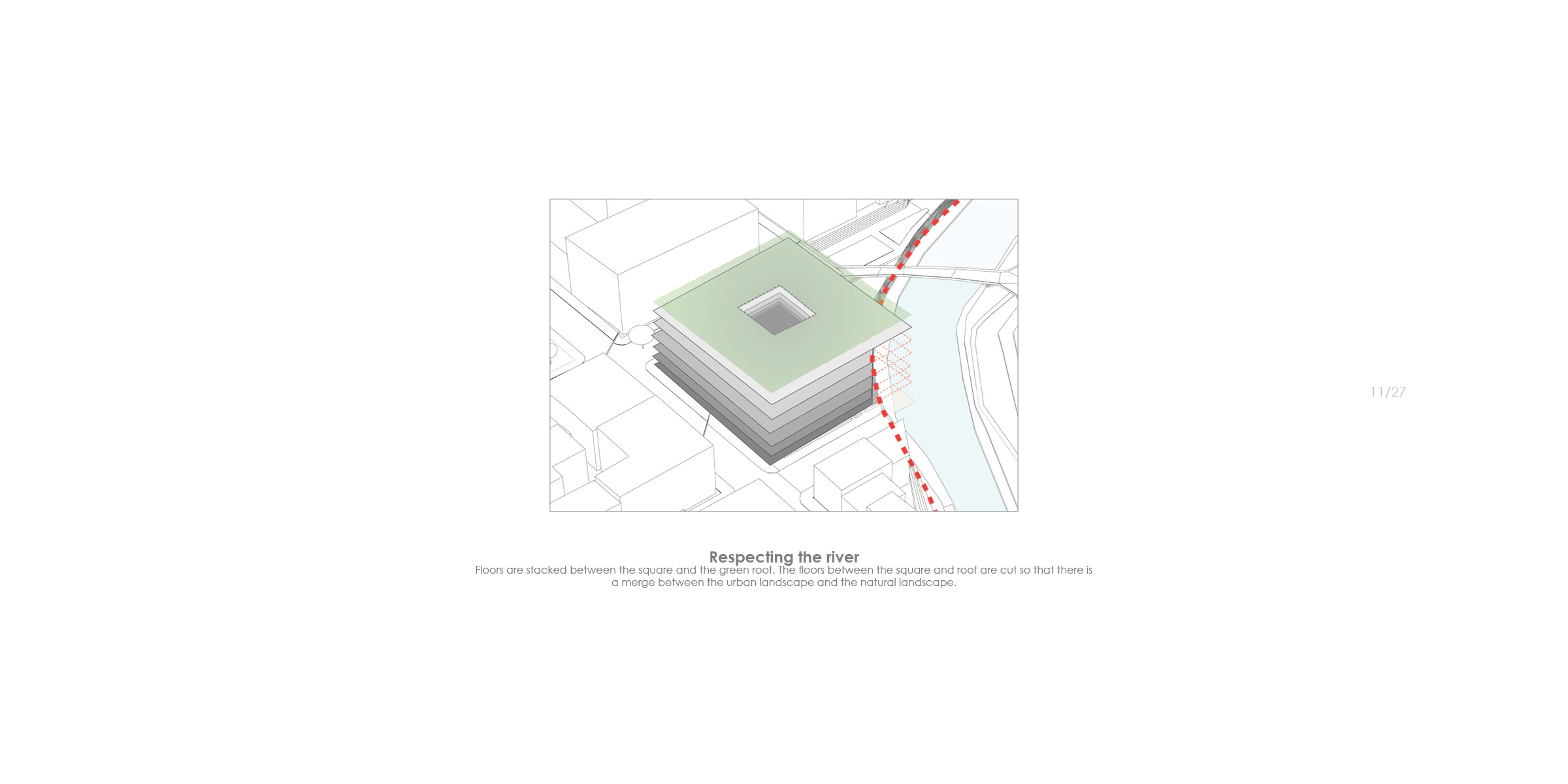
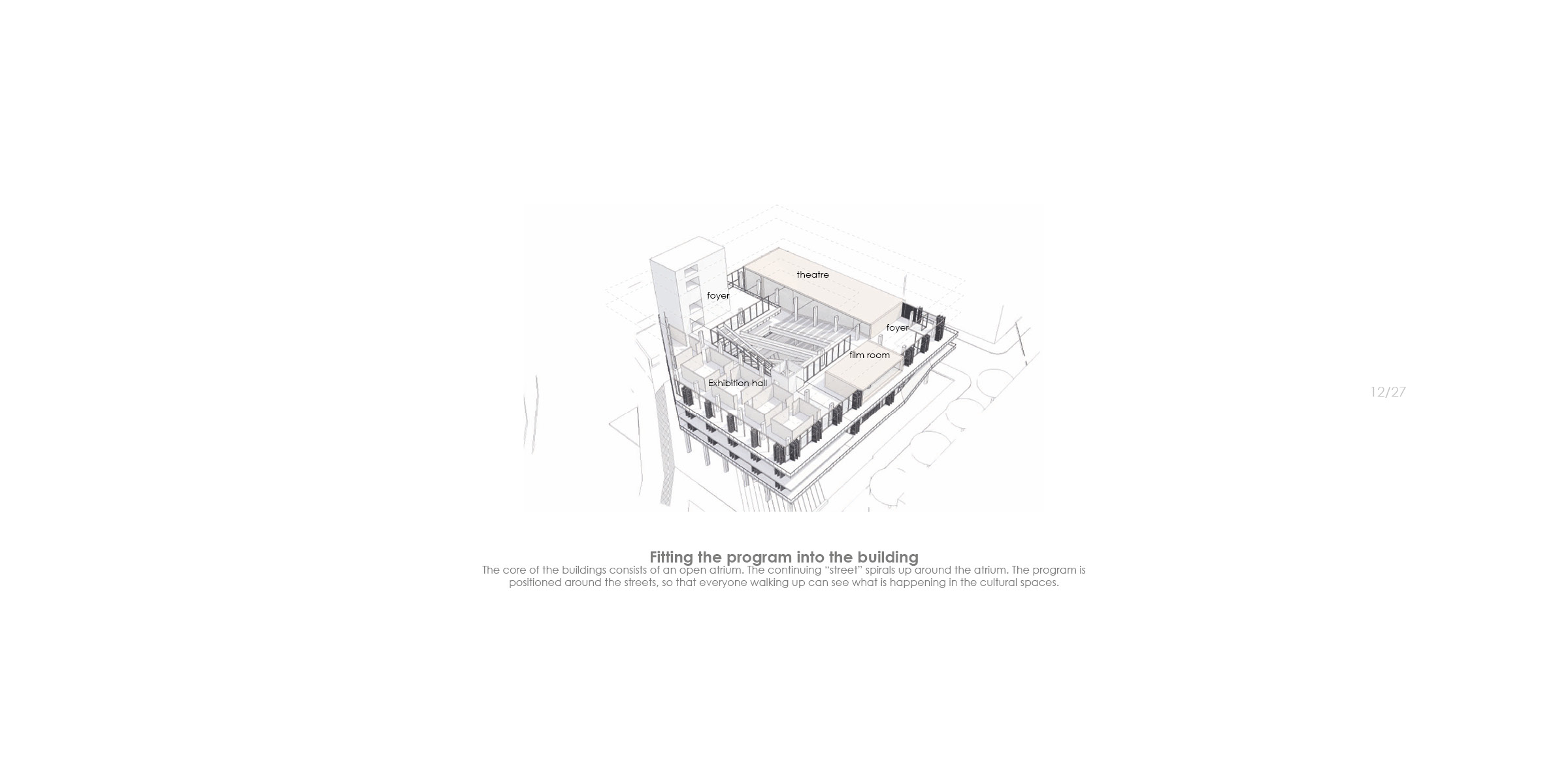
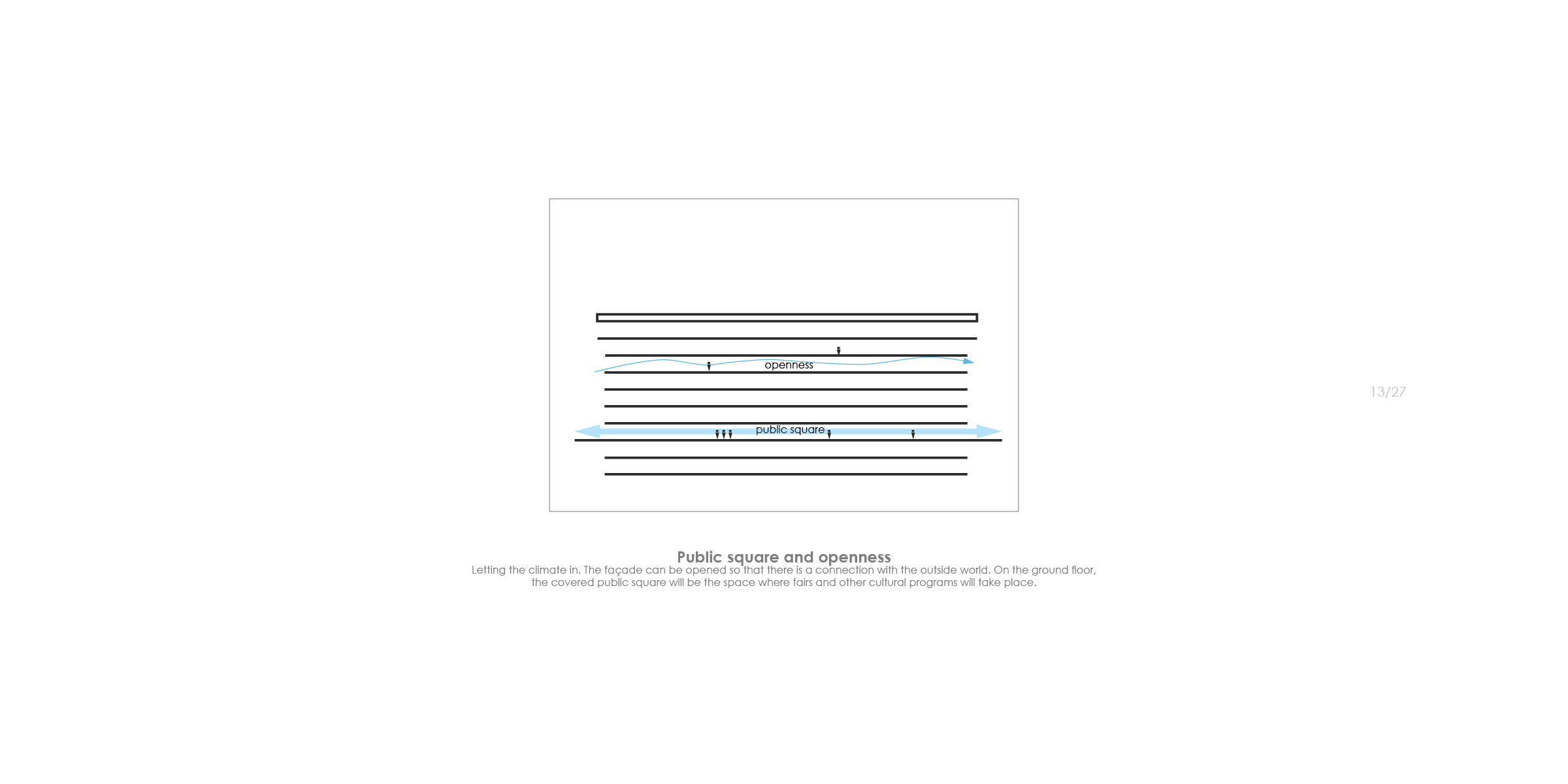
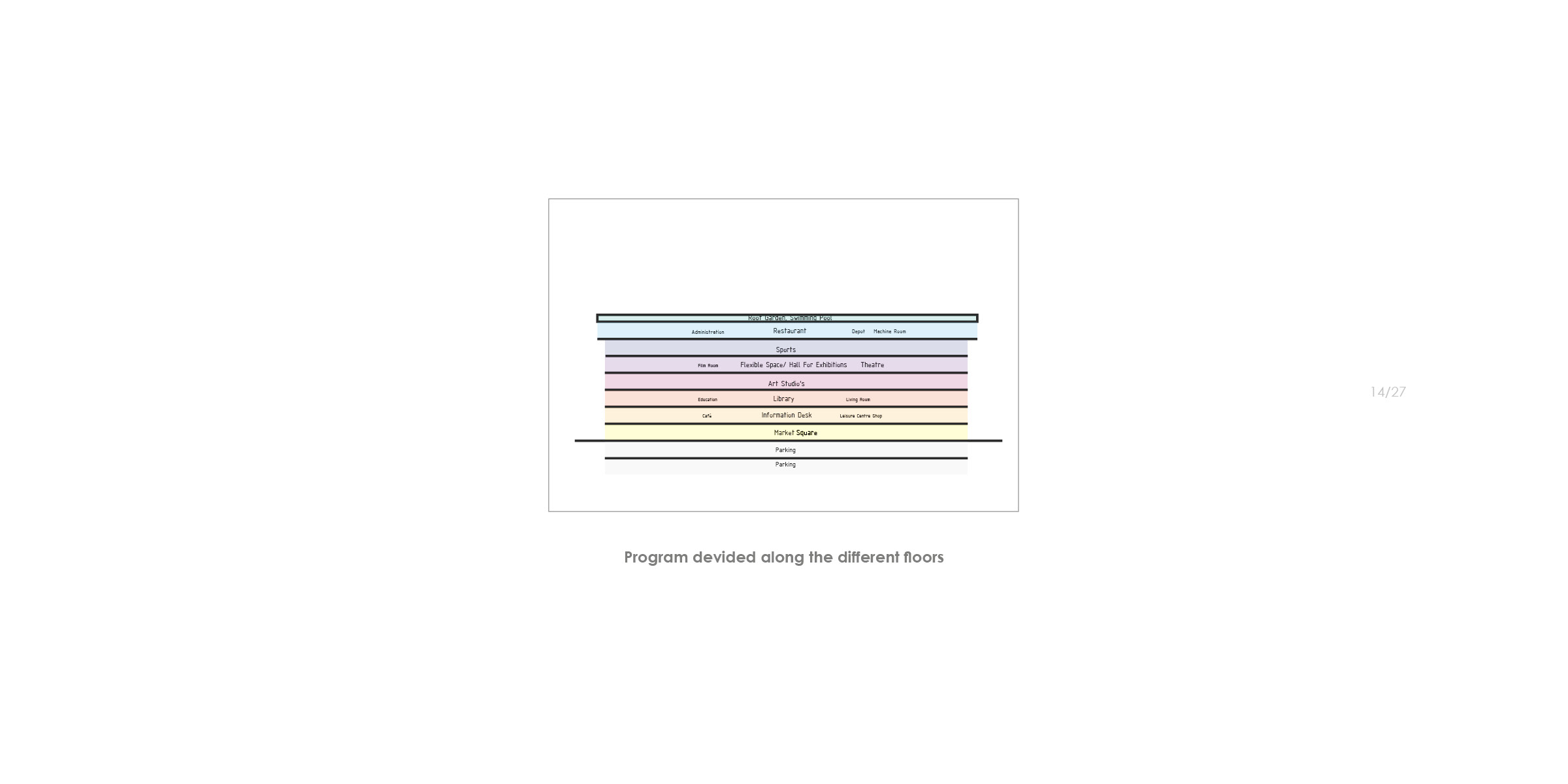
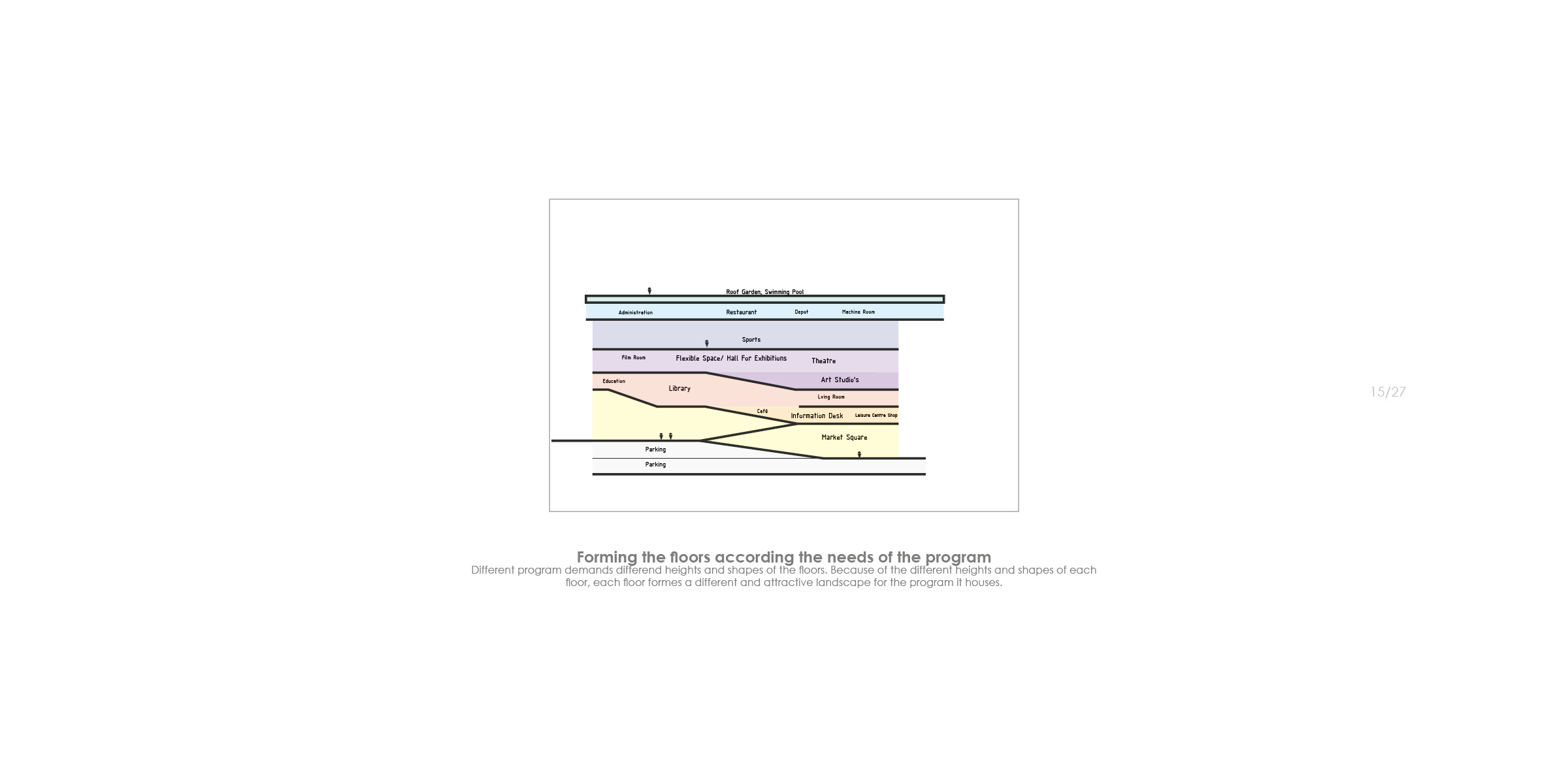
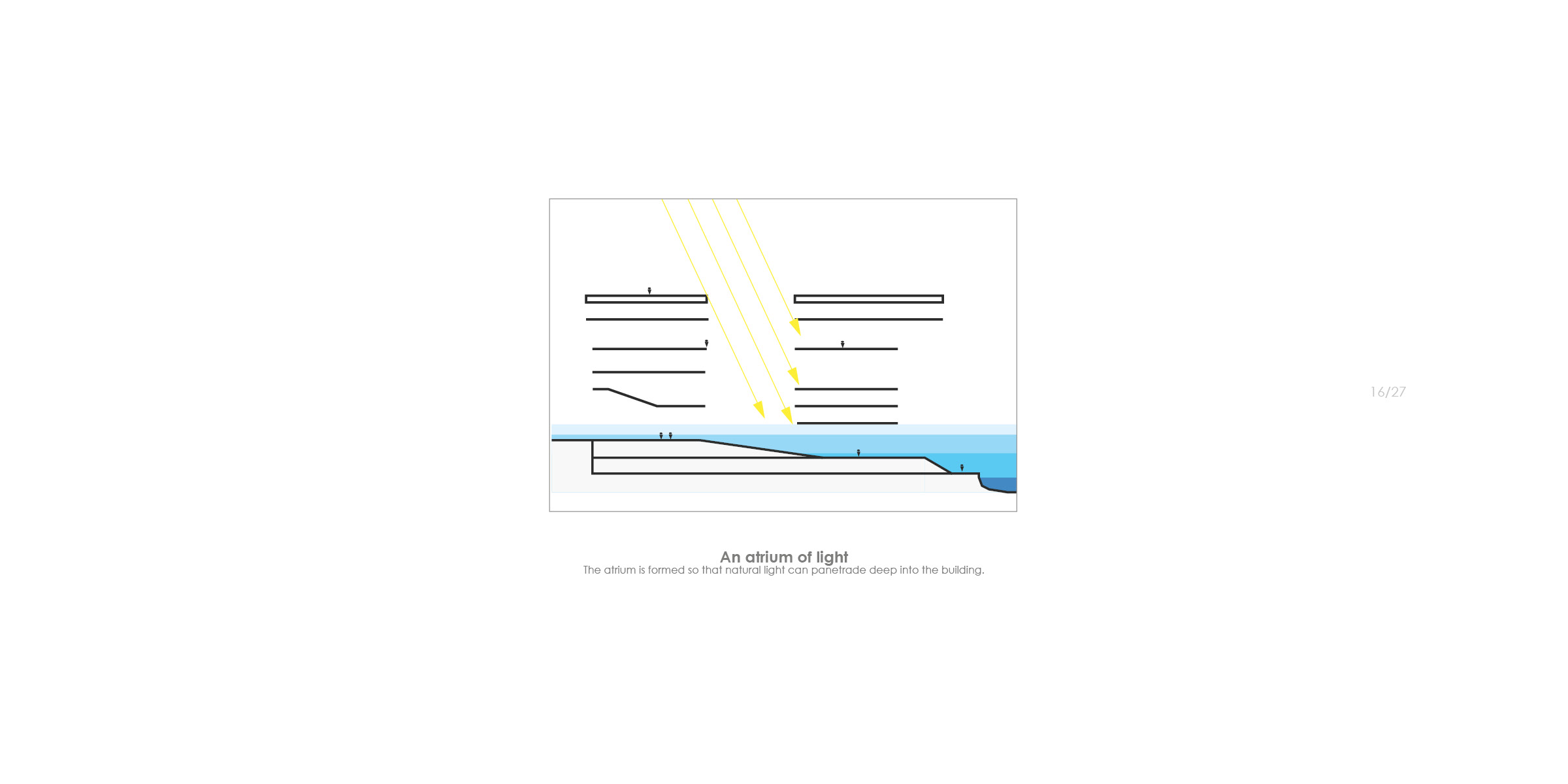

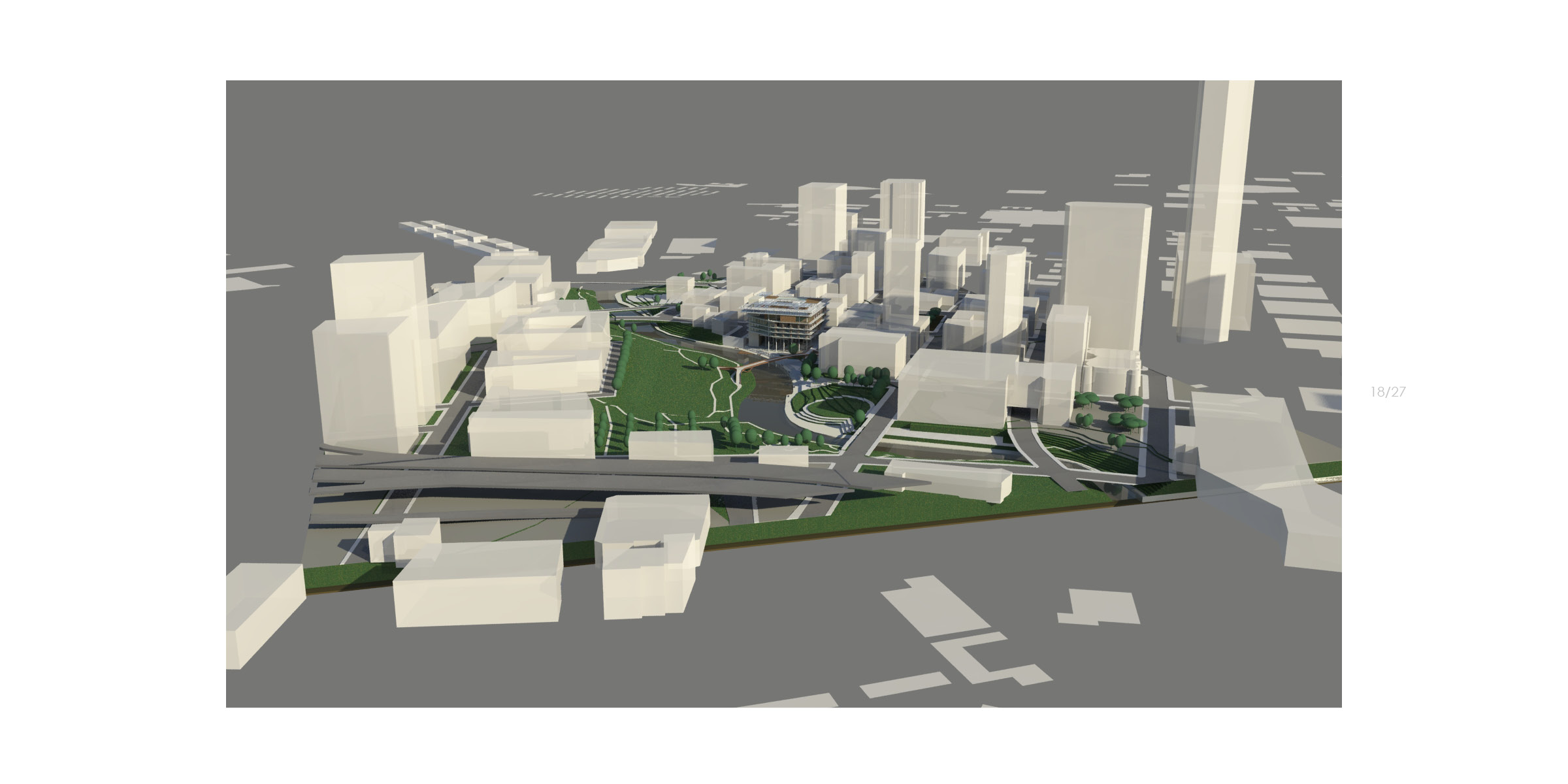
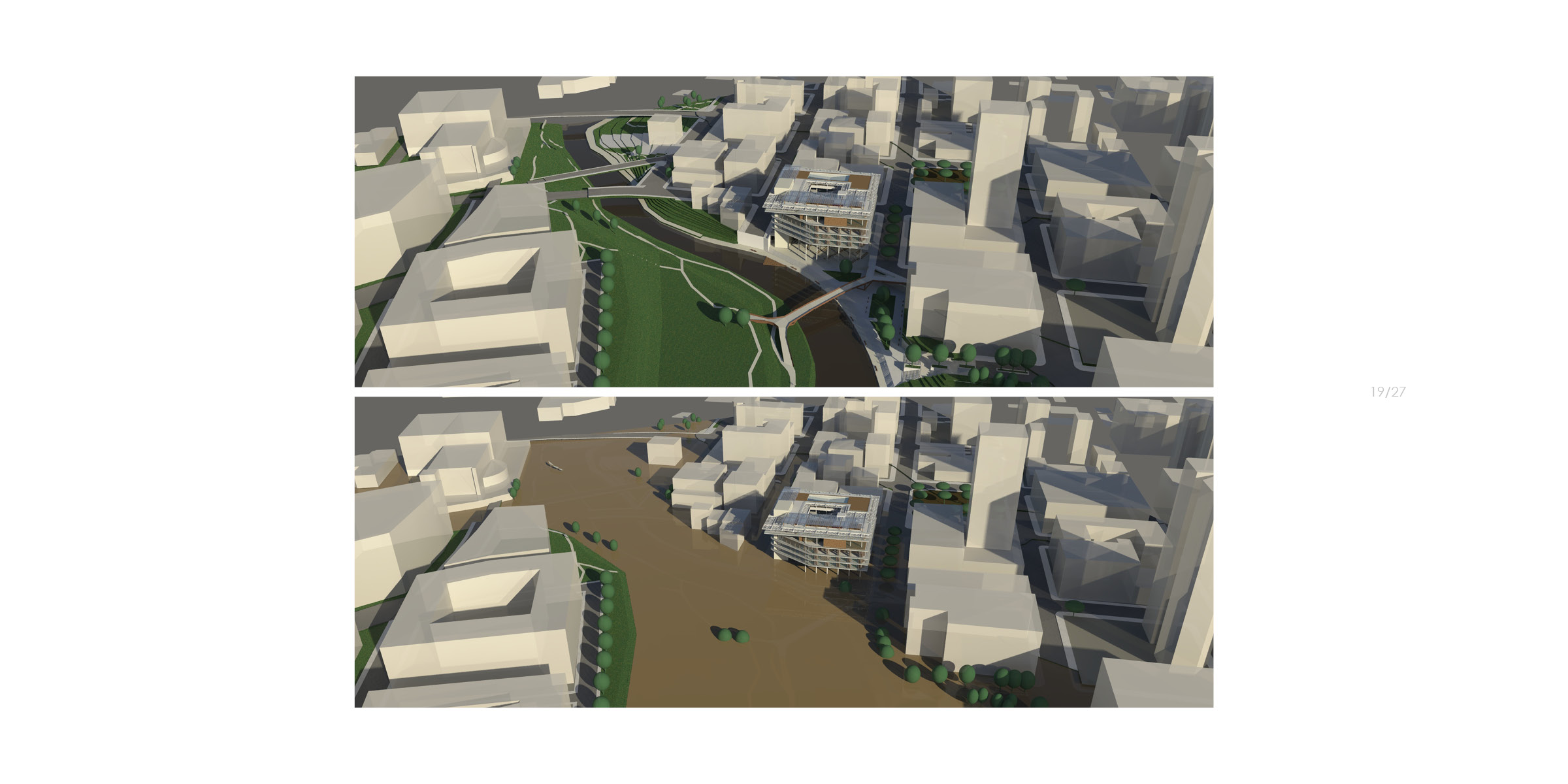
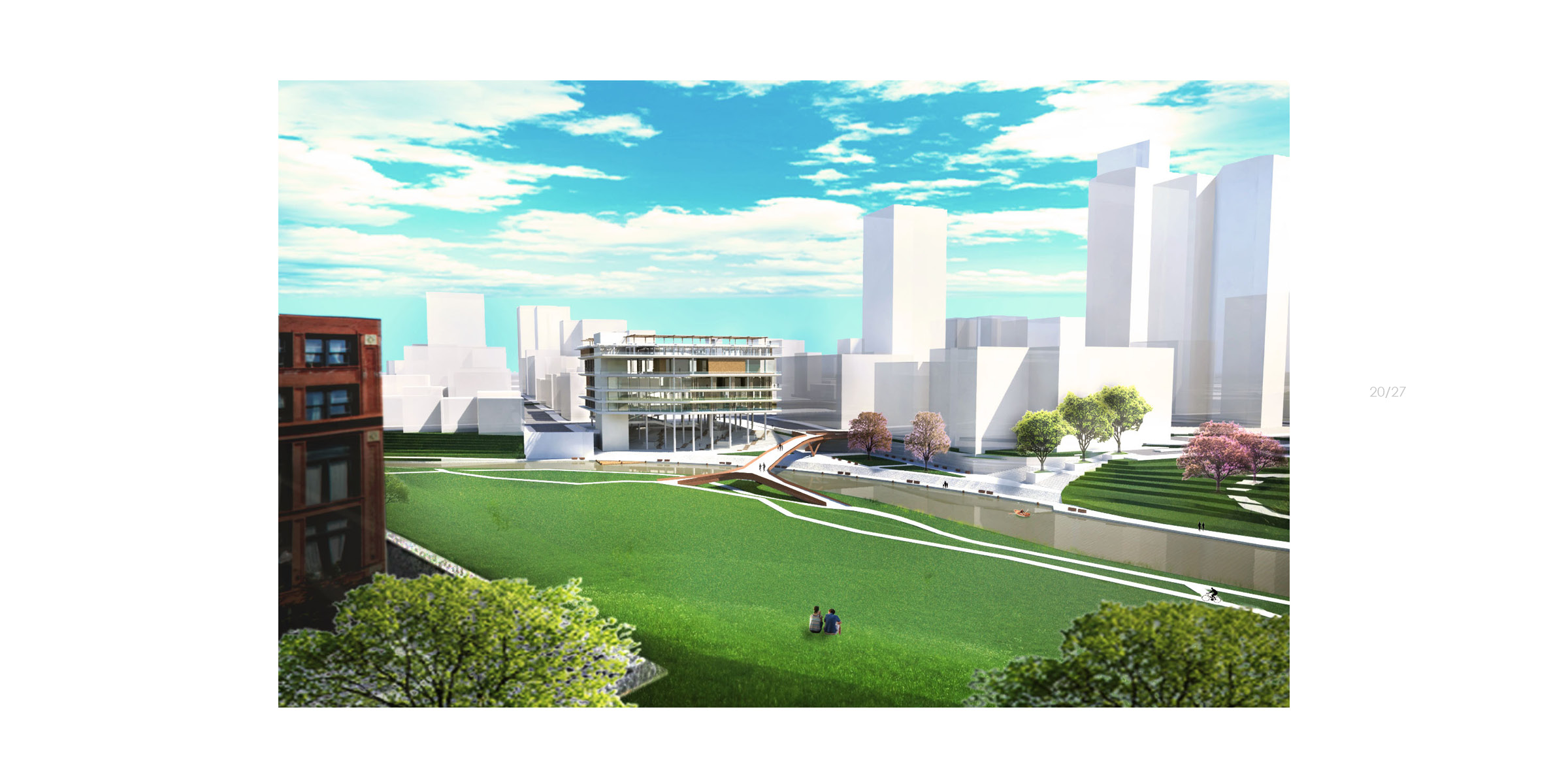
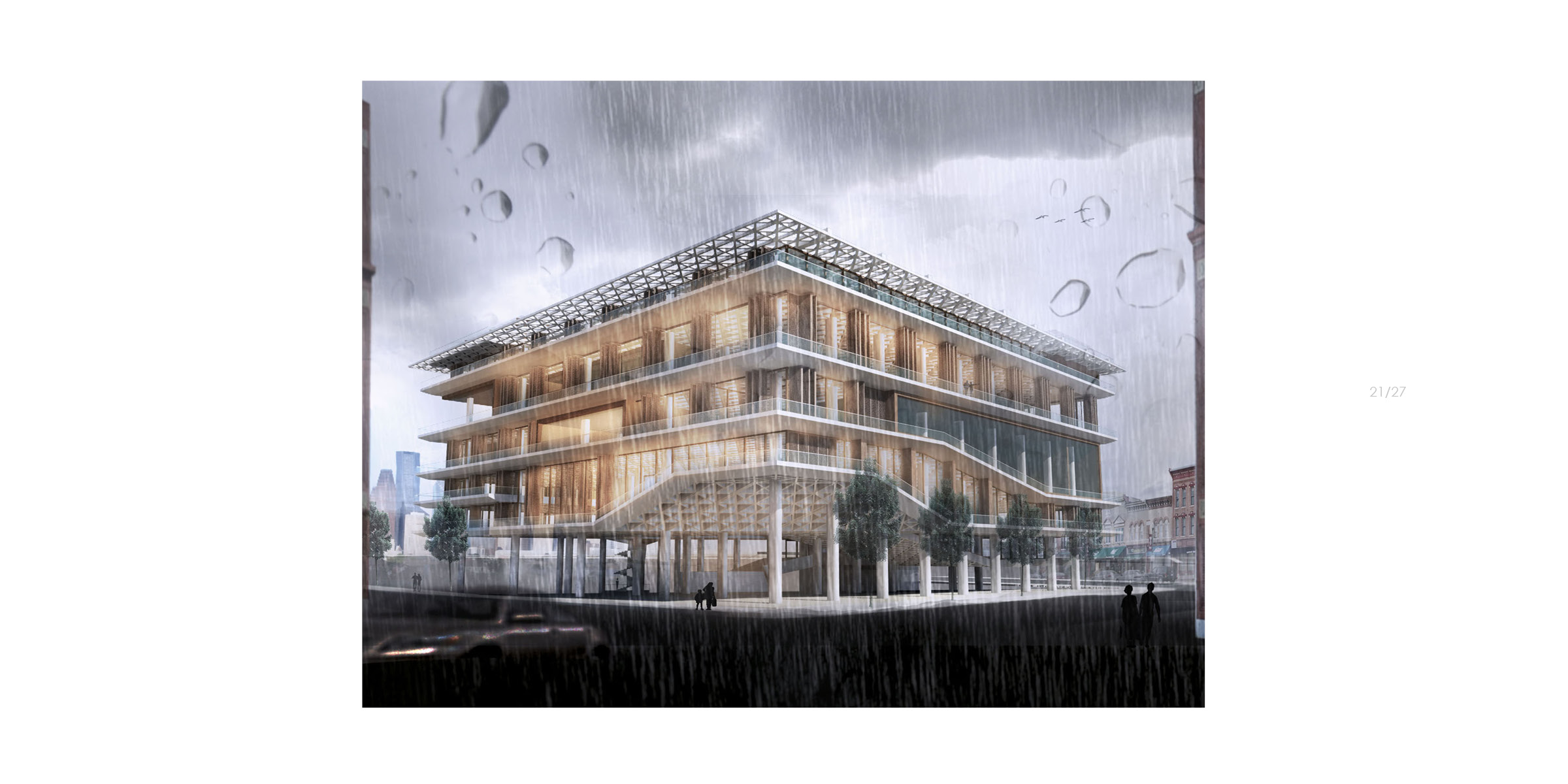
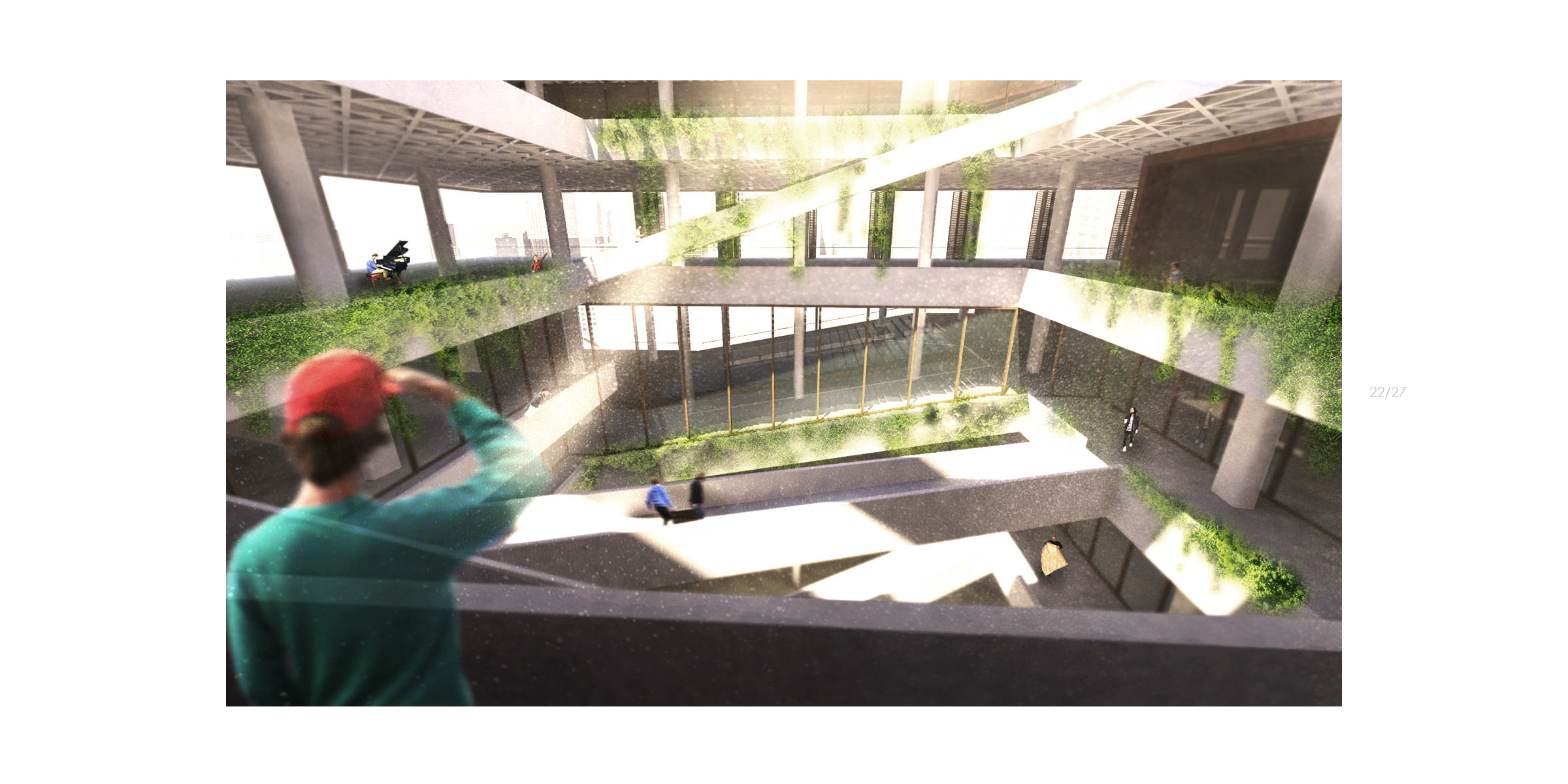
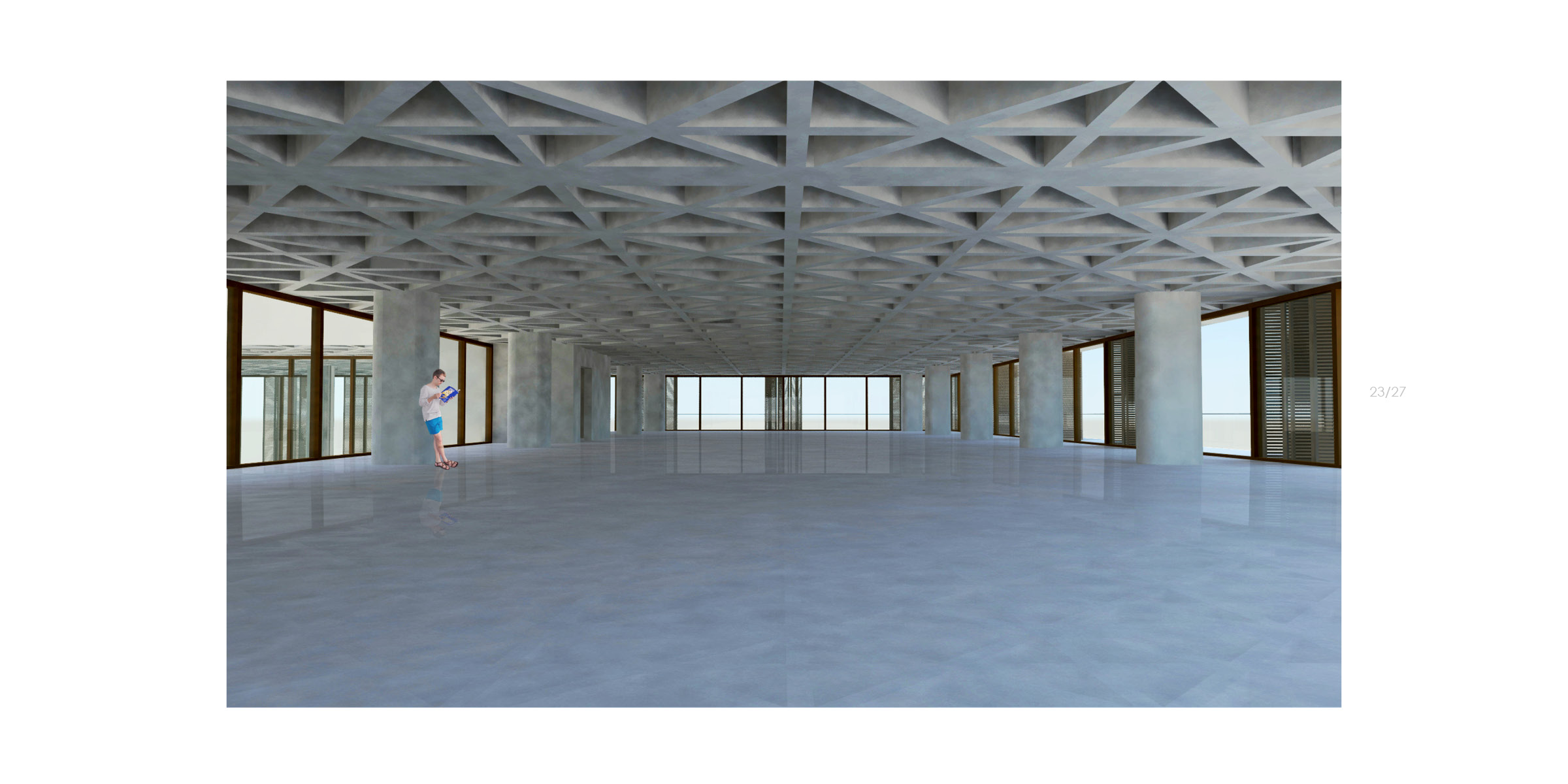
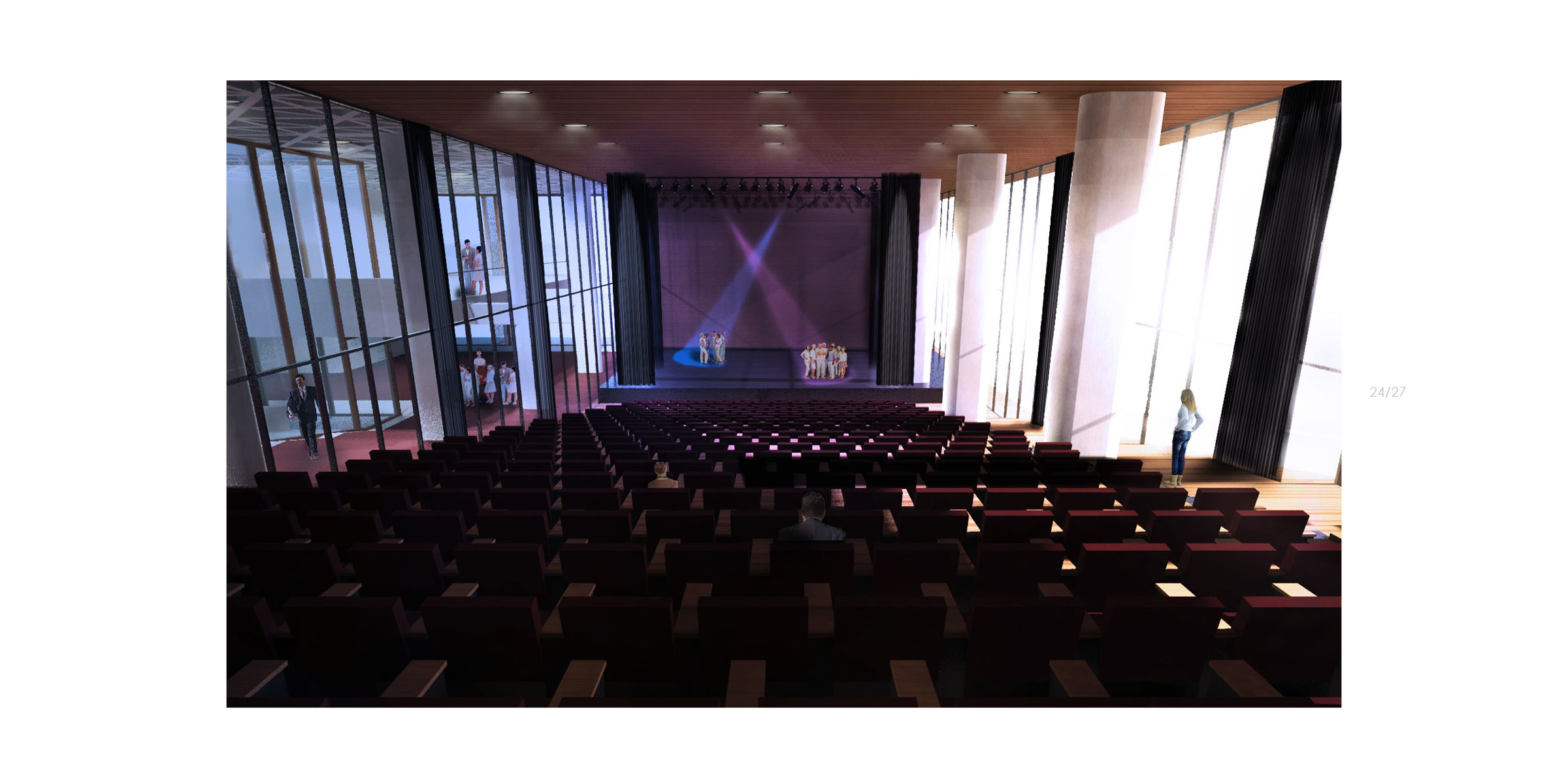
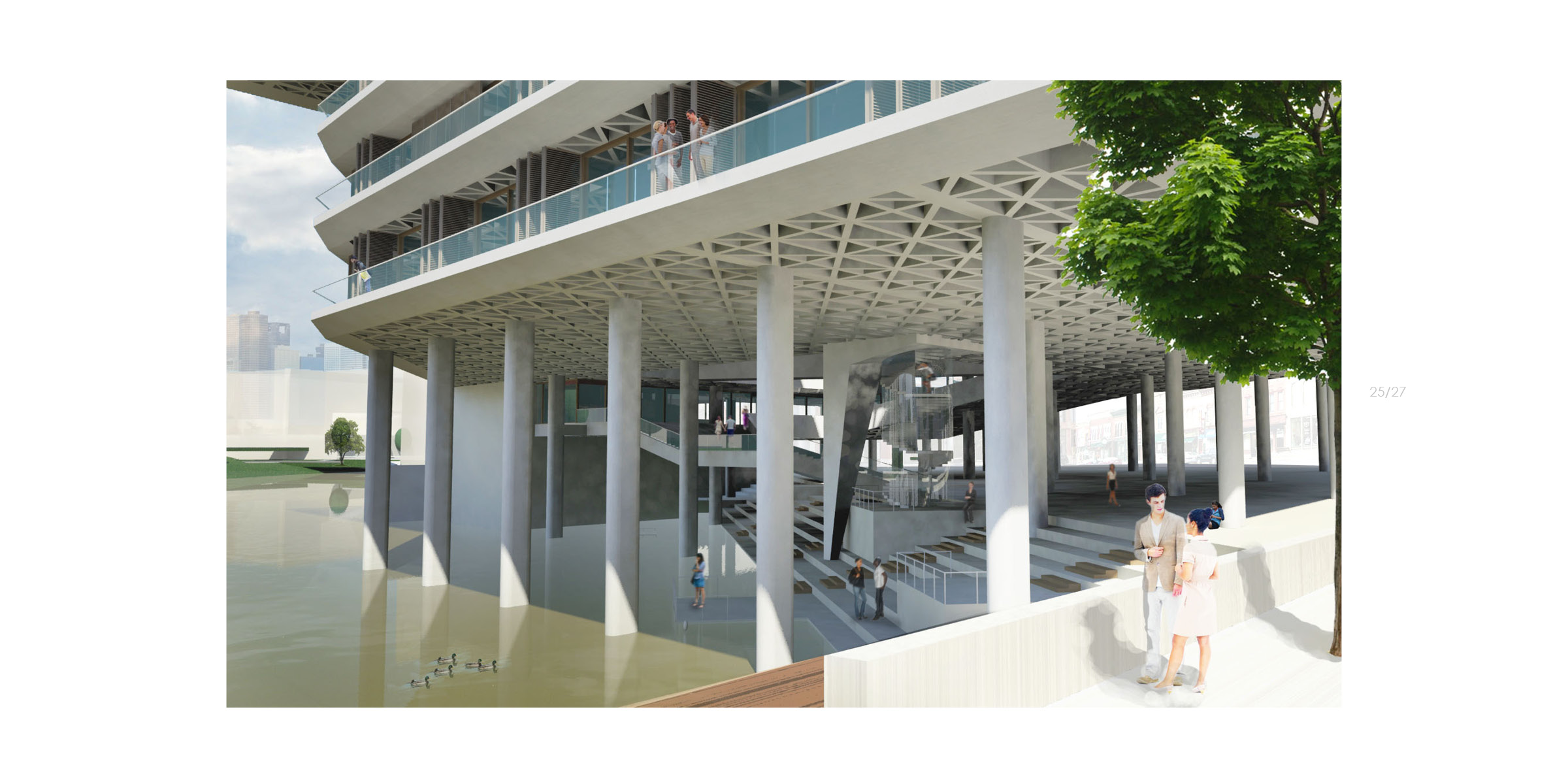
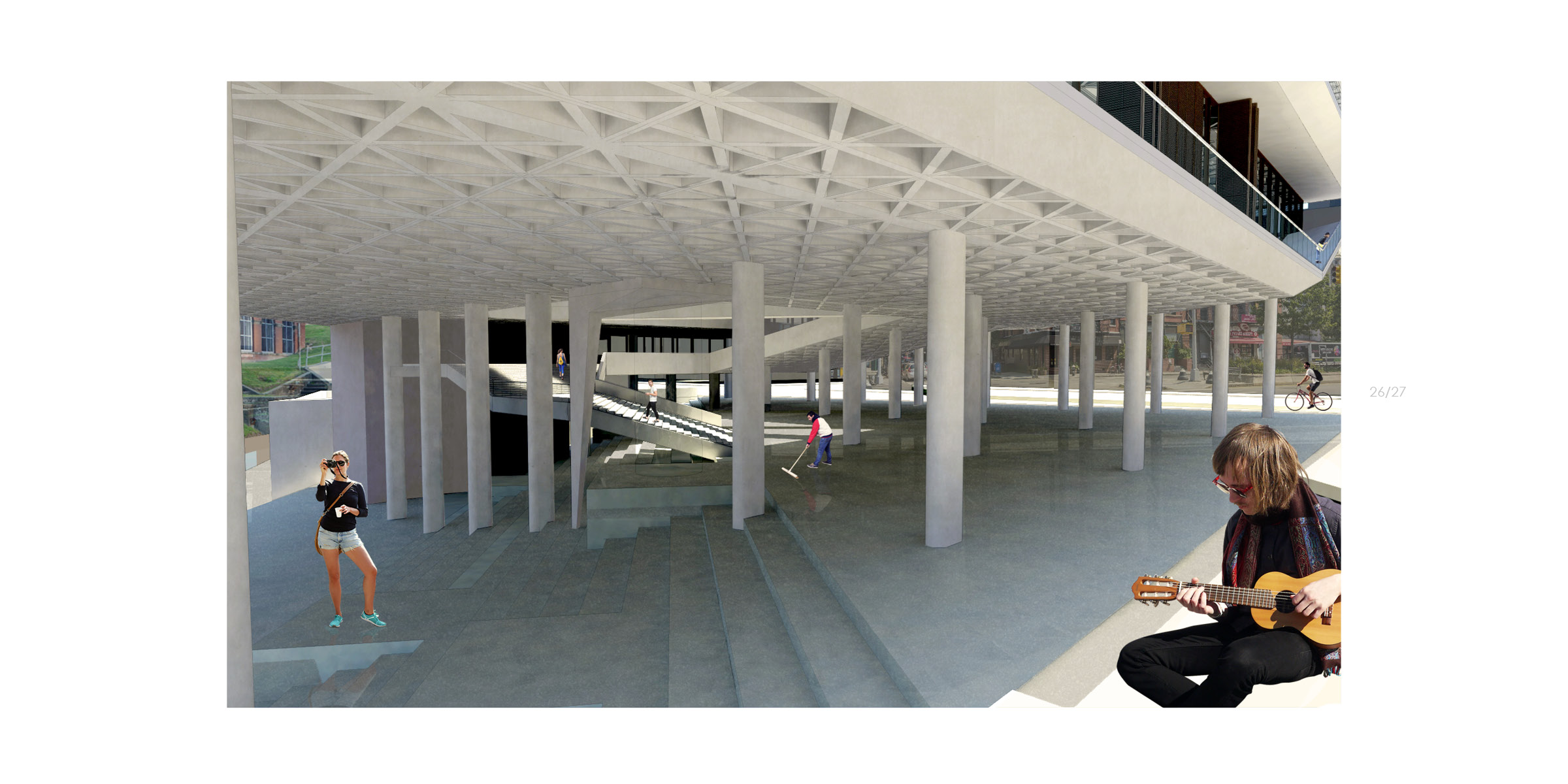
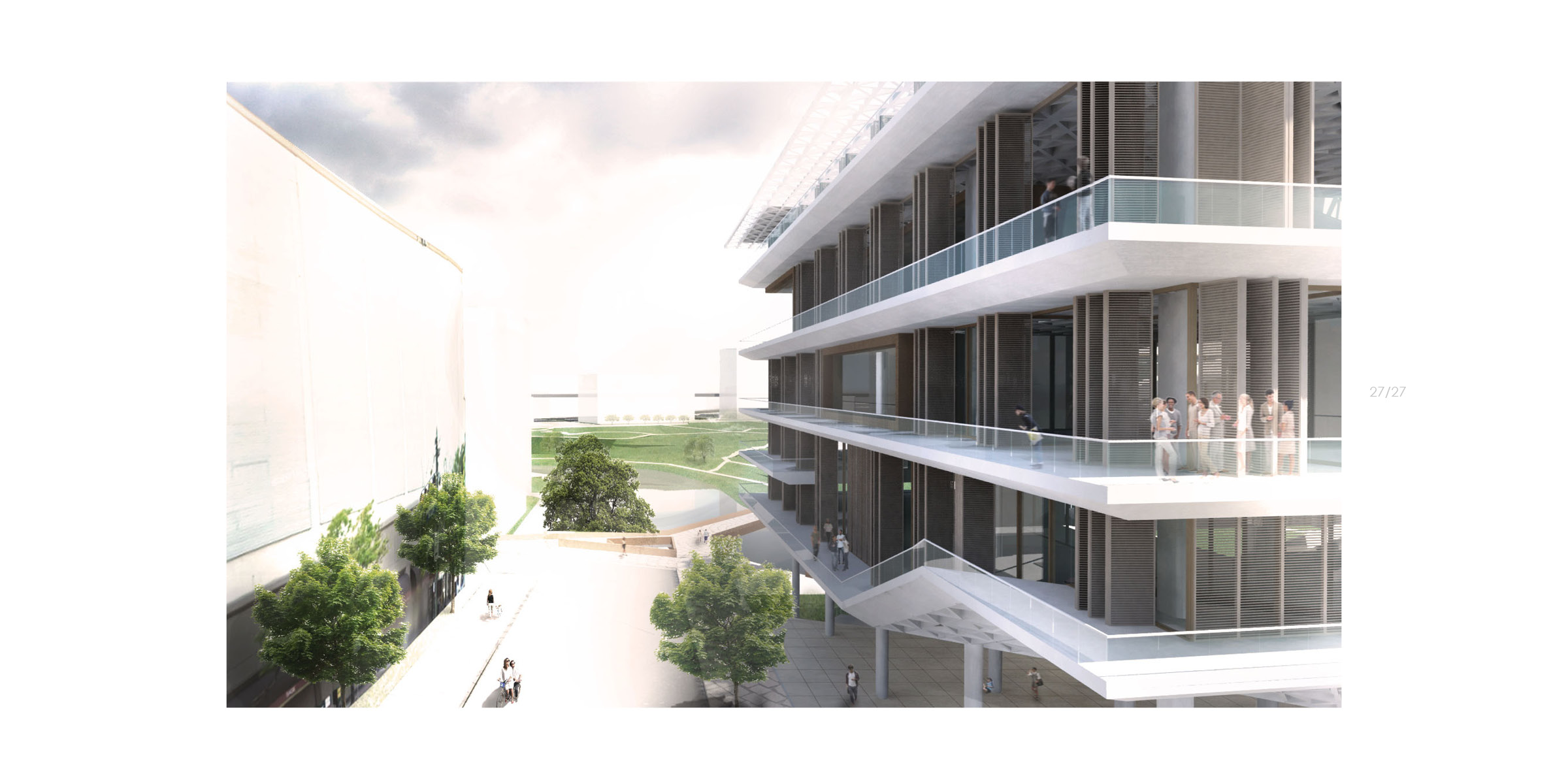



























As a result of low urban density, high car usage, telecommunication and Texas culture, no one really shares Houston. As Lars Lerup, former dean of Rise University stated:
“All of us have a unique view of the city (Houston red.) we inhabit. (…) Predominantly motorised and individualised, Houston limits pedestrian and public experience to interior spaces – be it mall, arena, church or parking garage. Exterior space is dominated by the movement through it; whether parking tarmac, freeway, cloverleaf, frontage road, cul-de- sac. Houston is mine (and everybody else’s), rarely to be shared, merely an extension of my driveway.”
To promote human interaction and lively streets, Houston needs attractors and a higher urban density; new buildings need to replace the existing parking lots, parking garages and gas stations. To further promote interaction, a Leisure Centre is proposed.
Downtown Houston is a strategic location: it lies in the centre of the city, is easily accessible, there is need for low threshold cultural venues, and already there is a development framework for that part of the city. The development framework and the densification of Downtown Houston will help the area to become a pedestrian friendly place, where people can share their city.
The design location of the architectural intervention is proposed at the north side of Downtown Houston, next to the Buffalo Bayou. The design location has great potential, but flooding forms a threat. A new urban master plan will provide room for the river and proposes a new accessible water front. The architectural design of the leisure centre will connect the city with the water front and is flood proof itself.
The design takes advantage of potentials, ranging from views of the (urban) landscape and climate (mostly expressed in the building), to human activities like sports, arts, culture and human interaction (mostly expressed in the program – based on SESC Pompeia by Lina Bo Bardi).
The integration of these potentials, as well as the integration of the climate design, construction, materialization, water related design, the integration into its context and social aspects has turned this in a robust and complete piece of architecture, anchoring the design into the city’s urban and social structure.[/vc_column_text][/vc_column][/vc_row]
2015
Houston, USA
Cultural